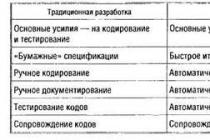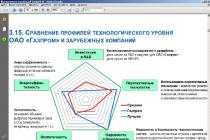In the mass consciousness, submarines are perceived primarily as carriers of missile weapons. Well, what about torpedoes? Are they in the past? And if they did, then why? Russian fleet went serial deliveries of torpedoes of the new generation "Physicist"? Let's look into this, based on the most general considerations dictated by elementary physics.
Mikhail Vannakh
The weapon that made the submarine a full-fledged warship was a torpedo. It was the torpedoes that allowed the tiny five-hundred-ton U-9 submarine with archaic kerosene engines (a kind of kerosene gas, only the gasified fuel went not into the burners, but into the Otto gas engine) to send three British armored cruisers with a displacement of 36,000 tons to the bottom on September 22, 1914 - HMS Aboukir, Cressy, Hogue. The loss of the Royal Navy - 1459 people - almost equaled the losses at Trafalgar.
The price of a dense medium
Both the submarine and the torpedoes operate in a medium with a density a thousand times higher than air - in water. It was the water that made the tiny submarine invisible, which made it possible to approach the firing distance without fear of the fire of the numerous cannons of the British armored giants.
And it was water with its high density that provided the impressive lethality that the 123-kilogram warheads of 45-centimeter torpedoes demonstrated on the very strong hulls of British cruisers. An explosion in water is much more destructive than an explosion in air. Yes, and an underwater hole into which water flows is much worse than surface, air-blown destruction.

But for everything - including the secrecy provided by the density of the environment - you have to pay. First of all, the cost of energy spent on overcoming the resistance of water. This led to an extremely low speed of torpedoes compared to artillery shells. Those C45 / 06, which was armed with U-9, had a stroke of 26 knots at a firing range of 3000 m and 34.5 knots at a firing range of 1500 m. In addition, in a dense environment, any deflecting moment - asymmetry of the hull, propeller thrust, impact waves - will have an incomparably stronger effect than in the air.
So from the very beginning, torpedo weapons were, if not controlled, then stabilized weapons. Aubrey's gyroscopic device, with the help of steering machines and horizontal rudders, did not allow the torpedo to go off course. Hydrostats measuring water pressure, controlling vertical rudders, kept the torpedo at a given depth, preventing it from diving deep, passing under the bottom of the target, or jumping to the surface. Similar opportunities - stabilization on the trajectory - rockets of the Smerch complex received only in the 1970s, when it was necessary to increase the firing range of the MLRS with acceptable scattering to 70 km. Such is the difference in the properties of water and air.

One kilometer deep
For most of its history, submarines were armed with torpedoes and it was with their help that they fought. But then on submarine fleet rockets came. They made it possible to combine the stealth of submarines with high speed and range, which was provided by a projectile moving in the air. Strategic - such as UGM-27 Polaris missiles launched from vertical silos. Tactical - designed to deal with Soviet submarines: NATO submarines were equipped with UUM-44 SUBROC rocket-torpedoes launched from torpedo tubes. solid fuel rocket engine lifted SUBROC out of the water and, under the control of an inertial control system, led in the air to a target at a distance of up to 55 km - the target was hit by a five-kiloton W55 nuclear warhead.
By the seventies of the last century, the torpedo faded into the background. She remained a "niche" weapon designed to fight submarines. And it was for this purpose that the previous domestic torpedo, the USET-80, was created, a universal homing electric torpedo, put into service in 1980. Why was this torpedo electric?
The fact is that in the seventies it was assumed that the working depth of promising US submarines would reach 1000 m. It was under a kilometer-long water column that the Soviet torpedo was supposed to hit them. But a kilometer of depth is a pressure of a hundred atmospheres. And any heat engine is designed to work in environment with low pressure.

So the creators of the USET-80 had to resort to an electric motor powered by a silver-magnesium battery, which is activated by sea water. This ensured operation at a kilometer depth, allowed the torpedo to reach a speed of 45 knots, and at 43 knots reach a range of 18 km. In a dense environment, where optics and radars do not work, at the then level of development of hydroacoustic means, this was quite enough.
Following the submarine
But in reality, the development of the technology of the Western Navy did not go as it was seen in the 1970s. The Seawolf-class multi-purpose submarines, which have been in service since 1997, have an operating depth of 480 m and a maximum depth of 600 m. For cheaper and more massive Virginia-class boats, entering service since 2004, the maximum depth is limited to 488 m. For German U-class submarines -212 maximum depth is 350 m, and their export version U-214, which is in service with the Turkish Navy, is 400 m. So there is no question of any work of torpedoes at a kilometer depth today.
At present, the Research Institute of Marine Thermal Engineering (St. Petersburg) has developed the UGST "Case", which is an improved version of the "Physicist" torpedo and has similar parameters. UGST are produced at JSC "Plant" Dagdiesel "" (Kaspiysk, Dagestan).
But modern submarines of respected partners go fast: Seawolf speeds up to 35 knots. And, as is easy to understand, firing a torpedo with a cruising range limited to 18 km is a difficult task, even if we take into account the homing capabilities of the USET-80 torpedo, which is capable of chasing an enemy submarine along the wake or approaching a target with the help of an active-passive sonar.
But no matter how sophisticated the control system is, the fundamental limitations of speed and power reserve impose their own restrictions on the use of torpedoes on high-speed maneuvering targets. For example, if our submarine were strictly behind the stern of the Sivulf in full swing, firing a USET-80 torpedo in pursuit from a distance of 3-4 km would not make sense: there would not be enough torpedo power reserve to reduce the distance to zero. For an hour on the move at 43 knots, she will be able to approach the submarine only 14.8 km. But the batteries will last less than a quarter of an hour ...
 UGST "Physicist" was put into service in 2015 and is installed on submarines of projects 885 ("Ash") and 955 ("Borey"). In the photo: the Alexander Nevsky nuclear submarine is the second ship built as part of Project 955.
UGST "Physicist" was put into service in 2015 and is installed on submarines of projects 885 ("Ash") and 955 ("Borey"). In the photo: the Alexander Nevsky nuclear submarine is the second ship built as part of Project 955.
If a torpedo had infinite speed or an infinite cruising range, then, having established contact with the target, it would be guaranteed to hit it within the radius of action or at a speed at least slightly inferior to the speed of the torpedo. But in reality this does not happen, and therefore the most important task was the increase in speed and power reserve of the new domestic torpedo UGST. And since it became clear that torpedoes would not have to dive a kilometer, they turned to chemical fuel, proven by centuries of practice, more energy-intensive for the same mass.
Fuel of the 21st century
The propulsion system of the Fizik torpedo uses a single-component fuel - about the same as modern solid-propellant rockets. Only in a torpedo it is not solid, but liquid. Which one? Well, we probably won't be much mistaken if we assume that it is in general terms similar to the Otto Fuel II monopropellant used in NATO countries' torpedoes.
This fuel has nothing to do with the Otto gas engine - it is named after the inventor Otto Reitlinger and consists of propylene glycol dinitrate (aka 1,2-propanediol dinitrate) stabilized with 2-nitrodiphenylamine and desensitized (lost detonation sensitivity) with dibutyl sebacate. It is a reddish-orange oily liquid with a pungent odor. Non-volatile, non-explosive, although quite poisonous. And it contains much more energy than any rechargeable battery.
 UGST "Physicist" has both a wake homing mode and a telecontrol mode, when the submarine's hydroacoustic system follows the target, and torpedo commands are transmitted via fiber optic cable.
UGST "Physicist" has both a wake homing mode and a telecontrol mode, when the submarine's hydroacoustic system follows the target, and torpedo commands are transmitted via fiber optic cable.
Well, in order to extract this energy, a single-component fuel is heated by a starting powder charge. The resulting gases go into the cylinders of the axial piston engine, where they are burned. Axial piston is an engine where the cylinders are arranged in a circle in parallel, with axes to each other, and a swash plate is used instead of a crankshaft. Once it was invented for aviation, but now it has taken root in torpedoes.
The axial motor is loaded with a low-noise jet motor. So the universal deep-sea homing torpedo "Physicist" has a speed of 50 knots with a range of 50 km, which significantly expands the tactics of its use compared to the USET-80. According to the Navy, the launch of the "Physics" from modern torpedo tubes is almost silent, which excludes the unmasking of the attacking boat. Both the homing system and the wired telecontrol system can direct the torpedo to the target, when the submarine's hydroacoustic system follows the target, and the torpedo commands are transmitted via fiber optic cable.
 UGST "Physicist"
UGST "Physicist"
Since the size of the sensors of the hydroacoustic station is larger on the boat, and the processors that process their data are more powerful, this application scheme gives better chances in a duel with an enemy submarine than with homing. The higher maneuverability of the "Physics" also helps this: after launch, its rudders go beyond the contour of the torpedo (in much the same way as the stabilizers of the 9M111 Fagot ATGM open), which provides greater control efficiency over a wide range of speeds. And this is necessary because with remote control - when a torpedo drags a cable or a coil of wire - you have to reduce the speed of the torpedo, paying with an increase in travel time for stealth.
So torpedo weapons are becoming more adequate for the tasks set by the 21st century. It can be launched from greater depths than rockets - up to 400 m. It has a lower level of unmasking factors, primarily noise: a torpedo delicately enters a liquid medium, and a rocket bursts into it with a blow of hot gases from the engine, almost an explosion. But the specific tactics of using this weapon is a military secret, much more serious than information about this weapon itself ...
Russian defense industry continues to implement new projects in the field of mine and torpedo weapons. Not so long ago, it became known that new results were obtained in this area: based on the results of all the necessary armament tests, a promising torpedo, known under the code "Case", was adopted. At the same time, some of the facts indicated in the latest reports on this matter may be a reason for optimism.
The product "Case" is the latest of the well-known domestic developments in the field of torpedo weapons. According to reports, the purpose of this project was to further improve the existing UGST "Physicist" torpedo, which was put into service several years ago. In particular, in connection with this new project also bears the name "Physicist-2". Work on the new project started in the recent past and over time led to real results in the form of readiness for adoption.
In March of this year, RIA "", with reference to unnamed sources in the military-industrial complex, wrote about the current successes of the Case project. Then it was indicated that the new torpedo had by that time been tested. In addition, some of the necessary checks have already been successfully completed. Also, an unnamed source revealed the future plans of the industry and the Ministry of Defense. So, in the foreseeable future, the Physicist-2 / Case torpedo was planned to be put into service. The corresponding order was supposed to appear in 2018.
Torpedo UGST "Physicist"
A few months later, on July 12, Izvestia published new reports on the progress promising project. From the published data it followed that by now the industry had managed to complete all the required work. The designer of the torpedo armament of the Research Institute of Marine Thermal Engineering, which was developing the new project, Alexander Grigoriev told Izvestia that the UGST Fizik-2 torpedo had already been put into service navy Russia. Also, a participant in the creation of a torpedo noted that in the future this product will have to replace all analogues in service. existing types equipped with electric power plants.
Recent reports on the adoption of the Case torpedo into service suggest that the tests were completed ahead of schedule - several months ahead of schedule. As a result, no later than mid-2017, the product was put into service, although earlier these events were attributed to the next 2018. Thus, serial products can enter the naval arsenals with a certain lead in the existing schedules.
It is known that the new product "Case" is a modernized version of the older UGST "Physicist" torpedo. Recall that development work with the cipher "Physicist" started in the mid-eighties; its goal was to create a promising deep-sea homing thermal torpedo. The lead developer was appointed the Research Institute of Marine Thermal Engineering, which was supposed to be assisted by several other organizations. Experimental UGST products were tested in the mid-nineties, and at the beginning of the next decade, the torpedo was put into service. During this period, the first public demonstration of the new took place, the platform for which was the International Naval Salon in St. Petersburg.
A few years ago, the development institute began to create a modernized version of the existing "Physics". The new torpedo based on the existing one received the working designation "Physicist-2". In addition, the alternative name "Case" soon appeared. Currently, both designations are used in parallel and do not cause any confusion.
Until a certain time, detailed information about the torpedo "Physicist-2" / "Case" was missing. Only a few months ago, some technical data was published. In addition, some of the press publications on the development of torpedo weapons revealed certain details of the new project. For obvious reasons, the most frequently mentioned differences from the existing weapons of the base model, as well as the advantages obtained in the new project. All the data published to date make it possible to draw up a fairly detailed picture, in which, however, some “white spots” still remain.
Like all modern domestic torpedoes, the UGST "Case" has a cylindrical body of high elongation with a cut hemispherical head fairing and a conical tail section, which serves as the basis for the propulsion and steering system. The total length of the product, according to available data, is 7.2 m, the caliber is 533 mm. The mass of a combat-ready torpedo is 2.2 tons.
In terms of its layout, the torpedo probably repeats the design of the base "Physics". Recall that the UGST of the first version had a head compartment with homing equipment, behind which the charging and tank compartments were located in series. The tail compartment was given for the installation of the engine and actuators of the control system. Apparently, in the new project, such a torpedo architecture was not changed or improved.
According to published data, the "Case" is equipped with an axial-piston internal combustion engine using a single-component fuel. The type of engine and its main characteristics have not yet been announced. At the same time, it is known that the base "Physicist" had a 350 kW (469 hp) engine, which used a rotating combustion chamber. Fuel was supplied by a high-pressure pump. Tanks for transporting fuel were located in the central part of the hull. It was proposed to start the engine using a starting powder charge.
The engine shaft passes through the tail compartment of the hull and is brought out, where it is connected to the jet propulsion. The impeller of the latter is placed inside the annular channel, which increases performance while reducing noise. Rudders are located next to the annular channel of the water cannon. A curious feature of the projects of the UGST "Physicist" family is the use of controlled surfaces that are laid out after leaving the torpedo tube. For greater efficiency, the rudders have a box-shaped design with a pair of large planes and a small jumper between them, brought into the stream. This design increases the efficiency of the rudders and simplifies control to a certain extent.
It is known that the product "Physicist-2" has a means of homing, but the type of such a system was not specified. At the same time, there is certain information about the control systems of the previous UGST torpedo. According to reports, within the framework of the R&D "Physicist", enterprises of the domestic defense industry immediately created two variants of active-passive homing systems that have certain differences. Together with homing, telecontrol from the appropriate remote control of the carrier submarine can be used. To transmit commands to the onboard systems of the torpedo, a cable placed on two coils is used. One of them is equipped with 25 km of wire and is located inside the torpedo, and towed from 5 km of cable in the transport position is placed near the jet propulsion. The third coil can be installed on board the carrier. With the help of a cable and remote control, a torpedo can be displayed in a given area of the intended location of the target, after which the search and guidance is assigned to automatic systems.
The homing system "Physics" has a flat nasal receiving-emitting antenna, which includes a large number of individual elements. The torpedo is capable of finding both the targets themselves and their wake. Automation detects surface ships at distances up to 1.2 km, submarines - up to 2.5 km. The wake indication time is 350 s. Undermining the warhead is carried out using a proximity fuse. It works at distances up to several meters from the target.
Behind the head compartment in the body of the torpedo "Case" is a combat charging compartment. Torpedoes of the new family carry a similar charge in the form of 300 kg of explosive. The power of such a fighting compartment is sufficient to inflict the most serious damage to enemy surface ships and submarines. Probably, simultaneously with combat torpedoes carrying a powerful explosive charge, products can be produced practical type. In this case, the charging compartment must be filled with ballast of the required mass.
According to the domestic press, the UGST "Physicist-2" / "Case" torpedo is capable of speeds up to 50 knots (more than 90 km / h) and move at depths of up to 400 m. The firing range is up to 50 km. Various publications have repeatedly noted that the promising product surpasses existing domestic and foreign torpedoes in terms of range. This feature of the new weapon significantly increases the likelihood of successful timely destruction of the target with minimal risks for its carrier.
According to previously published data, the new Case torpedo is primarily designed to arm modern nuclear submarines. recent projects. Thus, the first carriers of these weapons can be multipurpose nuclear submarines project 885 "Ash" and strategic cruisers of project 955 "Borey". At the same time, it cannot be ruled out that in the future such torpedoes will be included in the ammunition load of other domestic submarines built according to older projects.
The production of Cases should be deployed at the Dagdiesel plant in the city of Kaspiysk. According to available data, this enterprise currently manufactures products of the Fizik UGST, and in the near future will master the mass assembly of its modernized version. According to some reports, the launch of serial production of the Physicist-2 torpedoes will lead to a halt in the production of basic model products. Apparently, such a replacement will not lead to technological or operational difficulties, but at the same time it will allow to increase the potential of submarine forces to a certain extent.
Development new version homing thermal torpedo to replace existing products "Physicist" started just a few years ago. To date, torpedo builders have managed to complete the design and conduct the necessary tests. According to reports this spring, the checks were successful and allowed to make optimistic estimates. At the same time, however, anonymous sources of domestic funds mass media rather modest plans were called: the new torpedo was to enter service only next year.
Just a few months after that, one of the authors of the new project said that the Physicist-2 torpedo had already been adopted by the Russian Navy. Has it begun mass production- has not yet been specified. Other aspects of the new project are also not disclosed. At the same time, there were reports that the new torpedo will replace the base model in production.
The development of domestic mine-torpedo weapons continues and gives certain results. In just a few years, an updated and improved version of the existing Fizik UGST product was created, which has a number of advantages. This torpedo was put into service not so long ago, and in the near future it will have to enter the arsenals of the navy and get into the ammunition load of the newest nuclear submarines.
According to the websites:
http://ria.ru/
http://iz.ru/
http://vpk-news.ru/
http://bastion-opk.ru/
http://bmpd.livejournal.com/
UNIVERSAL DEEP SEA
SELF-GUIDED TORPEDO UGST
UNIVERSAL DEEP-WATER HOMING TORPEDO UGST
14.07.2019
At the International Military maritime salon IMDS-2019 JSC "Research Institute of Morteplotehniki" once again presented a universal deep-sea homing remote-controlled torpedo UGST. Designed to destroy submarines, surface ships and fixed coastal and offshore structures, it is equipped with an economical axial piston engine that provides a torpedo range of up to 25 km at top speed up to 50 knots and up to 50 km at a speed of 40 knots at a depth of up to 500 m.
Universal deep-sea homing torpedo UGST is part of the torpedo armament of submarines (submarines) and surface ships (NK).
The Russian analogue of the UGST torpedo has been put into service and successfully operated on submarines, nuclear submarines and NK of the Russian Navy.
In terms of a set of characteristics, the UGST torpedo is not inferior to the best world analogues, and surpasses it in terms of "efficiency-cost".
Military-technical cooperation "Bastion"


On the eve it became known that the Russian Navy is testing a new deep-sea torpedo "Case", which will replace the universal deep-sea homing torpedo "Physicist". Such tests are conducted in the strictest secrecy. The editors of the website of the TV channel "Zvezda" bit by bit collected information about the latest underwater weapons in Russia. On June 22, TASS reported, citing a source in the military industry. Such news cannot but rejoice, since they indicate that underwater weapons are developing in parallel with their carriers - submarines. The development of the previous version of the universal deep-sea homing torpedo was started in 1986 at the Morteplotekhnika Research Institute (St. Petersburg). ), the engine was tested in 1995, and it was put into service in 2002. The new version of the deep-sea torpedo is planned to be put into service much faster - already this year, and in 2017 mass production of this weapon may begin. The evolution of underwater weapons According to the source of the agency, the new Case torpedo will be the next version of the Physicist torpedo, which means it will have similar characteristics. In particular, experts believe that the 533 mm caliber and some other characteristics will remain the same. “This is a range of 50 km, a speed of over 50 knots, a depth of up to 400 m, that is, within the depths where modern submarines of 3-4 generations go today . We can say that the Case torpedo, which is currently being developed, is not of a revolutionary, but of an evolutionary type, ”Sergey Sochevanov, a military observer for the Navy portal flot.com, told the website of the Zvezda TV channel. He noted that this is considered a good sign and says that the country has funds for the phased development of naval weapons. “Now a sufficient amount of funds is allocated to the army to ensure the systematic development of all types of weapons. We recently adopted the Physicist torpedo, which in turn came to replace the Soviet torpedoes. Accordingly, having adopted the run-in torpedo "Physicist", we begin to work on a new torpedo with better characteristics of the homing head," the expert noted.  At the same time, he noted that so far there is no evidence in which direction the developers of the Case torpedo are working, but it can be assumed that innovation will concern, first of all, the head of the torpedo. She will receive an improved homing system with an increased target acquisition distance, as well as more modern system detuning from interference and anti-missiles of the enemy. anti-torpedoes One of the most important areas in which naval weapons are developing today is the creation of anti-torpedoes, Sochevanov believes. Today, not a single warship in the world can "escape" from a torpedo that travels at a speed of 50-65 knots. Therefore, the launch of anti-torpedoes - today the only way repel an enemy torpedo attack. Perhaps it is this side of the issue that they pay attention to during the testing of the new Case. “Torpedoes that are designed to attack must have a certain system of protection against countermeasures in order to break through the enemy’s defense,” the expert believes. Information about such developments is classified, but it is possible it is safe to say that such work is underway. “It can be said that the Physicist torpedo put into service is quite competitive. The fact that it was accepted into the fleet means that the product meets all the characteristics. After all, it has been run in for so many years, ”notes Sochevanov.
At the same time, he noted that so far there is no evidence in which direction the developers of the Case torpedo are working, but it can be assumed that innovation will concern, first of all, the head of the torpedo. She will receive an improved homing system with an increased target acquisition distance, as well as more modern system detuning from interference and anti-missiles of the enemy. anti-torpedoes One of the most important areas in which naval weapons are developing today is the creation of anti-torpedoes, Sochevanov believes. Today, not a single warship in the world can "escape" from a torpedo that travels at a speed of 50-65 knots. Therefore, the launch of anti-torpedoes - today the only way repel an enemy torpedo attack. Perhaps it is this side of the issue that they pay attention to during the testing of the new Case. “Torpedoes that are designed to attack must have a certain system of protection against countermeasures in order to break through the enemy’s defense,” the expert believes. Information about such developments is classified, but it is possible it is safe to say that such work is underway. “It can be said that the Physicist torpedo put into service is quite competitive. The fact that it was accepted into the fleet means that the product meets all the characteristics. After all, it has been run in for so many years, ”notes Sochevanov.  Secrecy above all else It is worth noting that Russia, as a country with a powerful fleet, has always been at the forefront in the development of torpedo weapons. Sometimes even ahead of its time. So, in June 2003, at the IMDS-2003 maritime show in St. Petersburg, Russia for the first time publicly showed a universal deep-sea homing torpedo. But on the second day of the exhibition, the torpedo was covered with carpet from public view. Such developments have always been the object of close attention of foreign naval experts. That is why it is worth saying a few words about the place that was chosen for testing Russian missiles. They take place at the 954th test base of anti-submarine weapons "Koi-Sary" of the Russian Navy on Lake Issyk-Kul in Kyrgyzstan. This place is considered ideal for such tests - the location of the test site in the waters of a closed inland water body eliminates the possibility of tracking tests and intercepting test samples by ships third countries. In addition, under an agreement between Russia and Kyrgyzstan dated July 5, 1993, the base was recognized as Russian property.
Secrecy above all else It is worth noting that Russia, as a country with a powerful fleet, has always been at the forefront in the development of torpedo weapons. Sometimes even ahead of its time. So, in June 2003, at the IMDS-2003 maritime show in St. Petersburg, Russia for the first time publicly showed a universal deep-sea homing torpedo. But on the second day of the exhibition, the torpedo was covered with carpet from public view. Such developments have always been the object of close attention of foreign naval experts. That is why it is worth saying a few words about the place that was chosen for testing Russian missiles. They take place at the 954th test base of anti-submarine weapons "Koi-Sary" of the Russian Navy on Lake Issyk-Kul in Kyrgyzstan. This place is considered ideal for such tests - the location of the test site in the waters of a closed inland water body eliminates the possibility of tracking tests and intercepting test samples by ships third countries. In addition, under an agreement between Russia and Kyrgyzstan dated July 5, 1993, the base was recognized as Russian property.
The database also includes the Russian-Kyrgyz joint venture"Lake", which is developing new and testing serial torpedo weapons. According to Sochevanov, the Issyk-Kul test site is also ideal because of the water of the lake, which is close in composition to sea water - where torpedoes are used.
“Russia had a test site in Feodosiya in Crimea, but so far it is not being used. There is also a training ground on Lake Ladoga, but it is not for all types of weapons, since the lake has fresh water, and salt water is needed for testing sea torpedoes. In the Issyk-Kul lake, the composition of the water is closer to that of the sea,” the expert noted. Torpedo carriers According to the source, the Case torpedoes developed by the St. Petersburg Research Institute Morteplotekhnika and manufactured at the Caspian Dagdiesel plant will be installed primarily on new nuclear submarines of projects 955 Borey and 885M Yasen. According to Sochevanov, the development of torpedo weapons closely connected with the development of submarines and in particular with one of the the most important characteristics- stealth. The expert gave an example of the Shkval torpedo, unique for its time. It was put into service in 1977 and reached a speed of 500 km per hour near the surface of the water. The torpedo could carry a nuclear warhead. However, with all its advantages, it had two serious drawbacks - due to its high speed, it made a lot of noise and the torpedo launch range was only 12 km. Both of these qualities betrayed the location of the submarine, which means that the crew should have waited for a return launch.  Now, when the secrecy of submarines comes to the fore, there is a need for new torpedoes capable of traveling a distance of 50 km and hitting a target.
Now, when the secrecy of submarines comes to the fore, there is a need for new torpedoes capable of traveling a distance of 50 km and hitting a target.
The Russian fleet has adopted a new universal deep-sea homing torpedo (UGST) "Physicist". She is considered unique both in combat characteristics and in her versatility. The magazine "Army Standard" tried to understand the features of the formidable "Physics". The development of a new generation torpedo was carried out jointly at the St. Petersburg Research Institute "Morteplotekhnika" and at the Region enterprise near Moscow since 1986. The developers were tasked with creating a weapon that would be superior in its characteristics to the USET-80 torpedo (universal homing electric torpedo). This torpedo was developed in the 60s and was put into service in the 80s. A competition was held in 1964 draft designs promising universal torpedo - both thermal and electric. Despite the fact that thermal performance characteristics at depths up to 600 m were obtained significantly higher than electric ones, an electric torpedo was adopted for further development under the pretext of the imminent appearance in the US Navy of submarines with a diving depth of up to 1000 m. Interestingly, a silver-magnesium battery served as a model for its battery , activated by sea water, with the American torpedo MK-44 caught by our sailors. According to a number of experts, the choice of electric universal torpedoes as a development priority led to a significant lag in this matter from the US Navy. There were many disadvantages: speed, range, big weight , the high cost of a torpedo. In addition, due to the low salinity of the water, the use of this type of torpedo in the Baltic Sea was excluded (the battery simply did not activate). The fact that at the time of 1991 the torpedo weapons of the USSR Navy was significantly inferior to the torpedo weapons of a potential enemy is considered an indisputable fact. USET-80 - electric. An electric torpedo of comparable dimensions always outperforms a thermal torpedo in speed and range. At least that's how it has been so far. We lost in the creation of a thermal power plant for a universal torpedo with performance characteristics "ahead of the Americans". In creating a thermal power plant for universal torpedoes with performance characteristics "on parity" on the same type as the Americans, one-component unitary fuel, we were cold-bloodedly late and, most importantly, discredited the very idea of \u200b\u200busing this fuel for a long time. Everyone who depended on it was to blame for this ... There was no one to use power. ”The decision to develop a fundamentally new torpedo was literally suffered. The main task was to create a torpedo capable of operating effectively at long distances. To do this, it was necessary to combine high speed and stealth movement of the projectile. It was decided to abandon electric power plants and switch to thermal ones. In Physics, the starting powder charge placed in the combustion chamber allows increasing the power of the propulsion system in a short time. This is especially important at the initial stage of the torpedo run. The torpedo is driven by a unique low-noise water cannon. The 533 mm UGST is equipped with a warhead weighing up to 300 kilograms and is designed to destroy enemy ships and submarines at a distance of up to 50 kilometers. For aiming at the target, an active-passive sonar system was used with the ability to identify the wake at a distance of 1.2 to 2.5 km and the response range of a proximity fuse from 2 to 8 m, depending on the type and size of the target. The possibility of remote control with a total cable length of about 30 km is provided. "Physicist" is produced for our torpedo tubes and has a length of 7.2 meters. Compatibility of the carrier equipment and on-board systems of the torpedo is made by program setting of the system unit during binding to a certain type of ship. Moreover, to accommodate a universal deep-sea homing torpedo on some modernized ships, it is possible to supply an adapter pre-launch preparation panel that allows you to enter data into the torpedo before firing. Important distinctive feature of this torpedo is its modular design. This allows you to create a whole family of torpedoes that have a multi-level modifiability potential: from reprogramming the equipment in the base model to replacing the tank compartment or engine. This approach makes it possible to quickly complete the UGST for the specifics of specific conditions of combat use. So, for example, with regard to the warhead of a torpedo (combat charging compartment), it is a compartment with an insert capsule in which an explosive is placed. Several modifications of the combat charging compartment have been developed that differ in mass and composition of the explosive, as well as the initiation system undermining. Russian designers have implemented another know-how in the UGST - two-plane rudders that extend beyond the caliber of the torpedo after it leaves the torpedo tube. This design of the rudders allows you to significantly reduce noise, as well as confidently maneuver on the most difficult, initial section of the path. In the future, it is planned to use a promising modification of this torpedo on two-component fuel under the designation "Physicist-2" or "Physicist-2000" (export name - UGST- M). Moreover, our defense complex does not stand still. "Physicist" has only recently entered service, and information has already appeared that in Russia they are working on the latest torpedo "Case". Her fleet should receive by the end of the year. Information about the performance characteristics of this torpedo is classified. Officially, it is only known that the "Case" will receive an improved homing system with an increased range for capturing an underwater target. Now the "Case" is undergoing state tests on Lake Issyk-Kul in Kyrgyzstan, which are scheduled to be completed in December. If successful, the mass production of weapons should begin in 2017. First of all, all submarines of projects 955 Borey, 885 Yasen and their modifications will be armed with the Case, and as the production of these torpedoes increases, other submarines will also be re-equipped. Navy.














